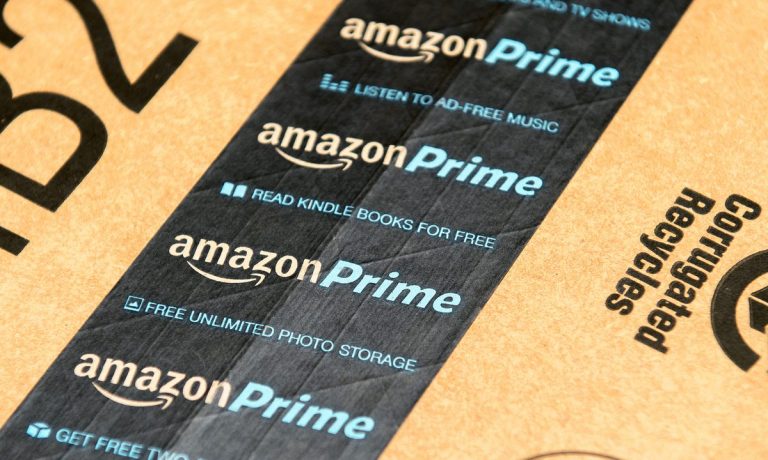On the heels of a tech rout on Wall Street, Amazon posted fourth-quarter results Thursday (Feb. 3) that cheered investors (the stock surged 15% after hours), though fulfillment and labor costs may weigh over the near term.
Headlines blare that the Prime membership fee is ramping up to $139 annually, from $119 — showing that, for the third time in the past decade, the company has the power to increase a key service that, especially during the pandemic, became indispensable.
The holiday season was kind to Amazon. Regarding headline numbers, $137.4 billion in quarterly revenue (just slightly below expectations), up from $125.6 billion in the same period a year ago. Management said on the call that the company’s two-year compounded annual growth rate had been 25%.
Drilling down into segments, the company broke out its revenue contributors, noting that:
Online Stores (direct eCommerce) sales were $66 billion, down 1% year on year and up from the third quarter’s $49.9 billion. Physical store sales were up 16% year on year to $4.7 billion, excluding FX.
Third-party seller services revenues gained 12% (ex XF), to $30.3 billion. On the conference call with analysts, Chief Financial Officer Brian Olsavsky said that third-party sellers represented 56% of all unit sales in the quarter, the highest fourth-quarter mix in the company’s history.
Advertisement: Scroll to Continue
Amazon Web Services (more commonly called AWS) had a 40% year-over-year revenue growth to $17.8 billion; management said that the company is on a $71 billion annual run rate.
Ad sales gained 32% to $9.7 billion.
In the conference call with analysts, Olsavsky said that the company is targeting further momentum in its ad business, tied in part to Twitch and other properties. The company still sees its sellers as being continued avenues of advertising consumption. The company’s AWS is available across 84 zones in 26 regions, and the firm is targeting expansion into 24 more zones and eight more regions through the next few years.
Looking to Improve Delivery
Labor and inflation costs (significantly from labor costs) added $4 billion to operating expenses in the quarter. Those costs should continue to be elevated over the near term, management said on the call.
Delivery efforts were also in focus, as management said on the call that the company aims to get back to pre-pandemic levels for one-day delivery and bring same-day delivery to more metropolitan areas.
See also: Amazon, Domino’s Lead Industry Rethink of Final Mile Free Delivery
Amazon, of course, has been building out its logistics over the past few years, and capex would be, according to Olsavsky, allocated with about 40% is going into infrastructure, roughly 30% for warehouses, and about 25% tied to building transportation capabilities. He noted, too, that capacity for the firm doubled across the past two years.
Of the buildouts and continued investments in delivery, the CFO said that “we like where we stand,” adding that “there’s more work to do in improving customer service. We like the progress that we are making and the future looks bright on that dimension.”




